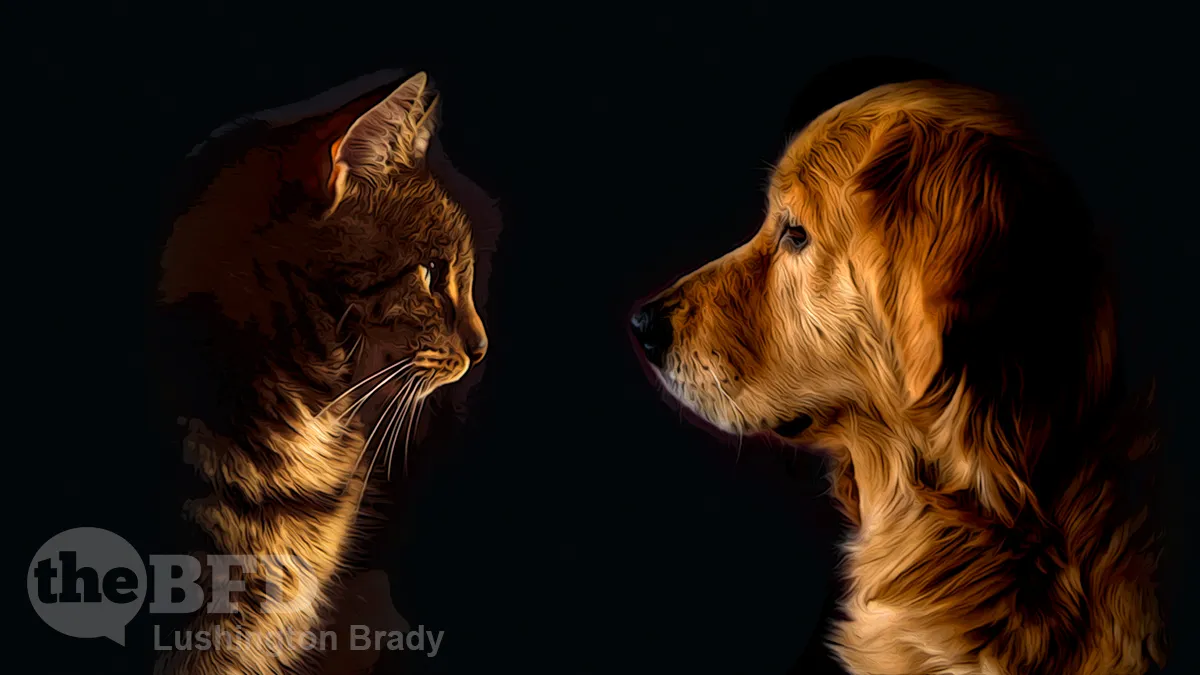Here’s one to set the cats amongst the dogs: which species is more intelligent?
If you’re, let us say, middle aged and female, you’re probably convinced that Mr Fluffykins represents the peak of non-human intelligence. On the other hand, bro-types are probably adamant that good old Balltearer is smarter than most people.
So, who’s on the money?
Scientists at Vanderbilt University wanted to compare the brains of different mammals to understand the relationship between brain size and density.
To do so, their study examined the neuronal density and brain sizes of eight mammals: cats, dogs, bears, lions, hyenas, ferrets, mongoose, and raccoons. Brain density measures the number of neurons – those small, grey brain cells that determine our thoughts and behavior – located in the cerebral cortex, which is a common indicator of intelligence.
Hmm. Maybe. We humans, after all, have roughly the same brain density and some of us struggle to tie our own shoelaces. Some are even so mind-numbingly, box-of-rocks dense that they even vote Green. Still…
Ultimately, the findings revealed that dogs’ brains contain twice as many neurons as those of cats. Dogs’ cortical neurons outnumbered cats’ by 530 million to 250 million, to be exact. Meanwhile, golden retrievers won the day for the most cortical neurons of all animals studied, with 627 million.
Lay-down misère? Maybe.
But if you’re ready to unleash your bragging rights as a dog person, proceed with caution.
The researchers warned that the results shouldn’t be mistaken as the final word on this age-old battle.
“Any argument about their cognitive capabilities at this point will be largely a matter of opinion until direct, systematic comparisons of cognitive capacity are performed across these and other species,” the researchers wrote.
Reader’s Digest Asia
Aw, they’re just saying that to try and keep the demented landwhales of Tumblr feminism from shrieking for their heads for daring to suggest that their 20 cats are collectively even more dense than they are.
But they do have a point, actually.
Firstly, cats probably fail other common animal intelligence tests – maze tests and the like – because they’re just such stubborn arseholes who don’t give a shit about intelligence tests. Or humans in general, for that matter.
Compared to dogs, scientists have found, cats don’t seem to have the same sort of emotional attachment to their owners, and show genuine affection far less often than you might think […] researchers adapted a classic child psychology experiment called “the strange situation,” in which a parent slips out of a room while a baby or young child is playing and then later returns. The child’s behavior upon being abandoned and reunited with the parent is observed and analyzed. This sort of thing has been also done with dogs several times (including by Mills), and the experiments have found that dogs demonstrate an attachment with their owner — compared to a stranger, the dogs become more disturbed when their owners leave, and interact with them more when they return.
By contrast, [Daniel Mills, a veterinary researcher at the UK’s University of Lincoln]’s cat experiments – which are still ongoing and haven’t yet been published, but were featured in a BBC special last year – haven’t come to the same conclusion. On the whole, the cats seem uninterested both when their owners depart and return.
But, wail the blubbery females who reeks of cat urine and desperation, Wuffykinsfuzzyfoot loves me! He… he purrs! And rubs against my legs. Aww, so cutywookykins…
Get over it, you blue-haired Vogon: you’re just another object.
There’s good reason to believe that, much of the time, these sorts of behaviors that look like affection are conducted with entirely different goals in mind.
Many cats, for instance, will rub up against the leg of their owner (or another human) when the person enters a room. Its easy to construe this as a sign of affection. But many researchers interpret this as an attempt, by the cat, to spread his or her scent – as a way to mark territory. Observations of semi-feral cats show that they commonly rub up against trees or other objects in the exact same way, which allows them to deposit pheromone-containing secretions that naturally come out of their skin.
Vox
Well, I guess the cat ladies can at least take some comfort in knowing that something considers them worth owning.









